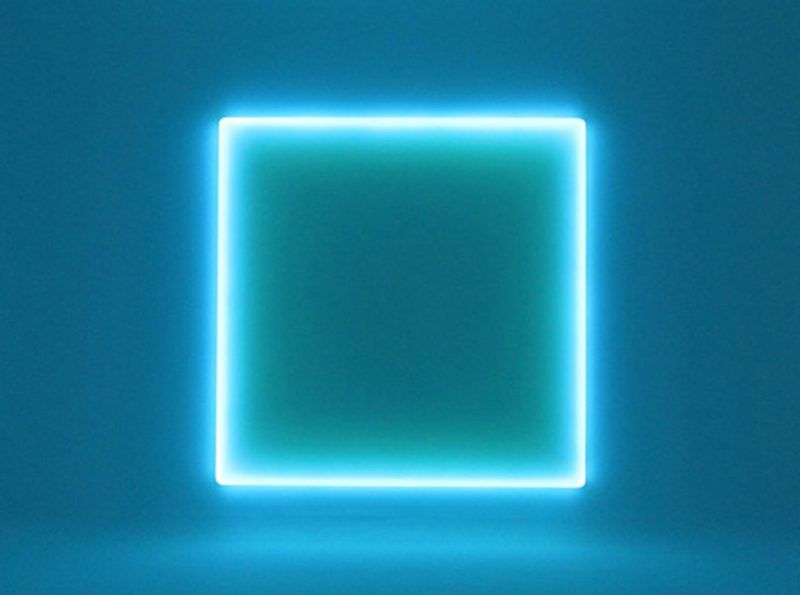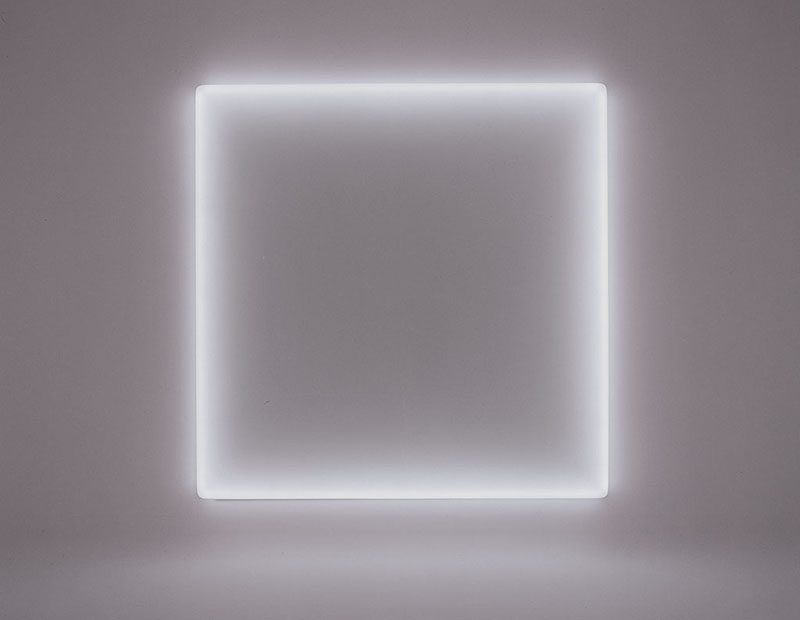ART-PRESENTATION: Doug Wheeler-Encasements
 Doug Wheeler creates site-specific environments built within the white walls of the gallery that utilize light, space, and sound as a catalyst for altering viewers’ experiences of a space. He was associated with the Southern California Light and Space movement of the ‘60s. Wheeler’s perceptual concerns can be traced to his earliest white paintings, his subsequent use of neon light in his paintings, and his eventual elimination of the painting in favor of an entire room with light.
Doug Wheeler creates site-specific environments built within the white walls of the gallery that utilize light, space, and sound as a catalyst for altering viewers’ experiences of a space. He was associated with the Southern California Light and Space movement of the ‘60s. Wheeler’s perceptual concerns can be traced to his earliest white paintings, his subsequent use of neon light in his paintings, and his eventual elimination of the painting in favor of an entire room with light.
By Efi Michalarou
Photo: David Zwirner Gallery Archive
Doug Wheeler highlights space almost entirely through the effects of light, using mainly ultraviolet fluorescent, quartz-halogen, and neon bulbs. In his installations, white paint, diffuse light, minimal forms, and simple designs allow light to shine as the central element of construction. By dematerializing the interior space, Wheeler transforms these rooms into entire abstract worlds that often suggest a vacuum or void. The exhibition “Doug Wheeler: Encasements” represents the most comprehensive presentation to date of this important body of work, and comprise five “Encasements”, including a rarely seen “Center Light” work. Presented at David Zwirner Gallery in an open configuration, viewers have the unprecedented opportunity to consider these singular works in relation to one another and to compare the distinct luminous atmospheric effects and subtle tonal variations that characterize each of them. Previously, no more than two encasements have been shown together and accordingly this exhibition aims to underscore their ongoing significance. First conceived between 1967 and 1969, the “Light Encasements” evolved out of his longstanding experimentations with fabricated acrylic and neon, and consist of large panels of vacuum-formed plastic with neon lighting embedded along their inside edges. Installed in a white room with all architectural detail and ambient light eliminated, the light paintings appear to dematerialize, immersing viewers in a luminous space where light seems to have almost particulate mass. Wheeler created only 20 encasements of this type in addition to 2 variant center light encasements, one of which can be found in the collection of the Orange County Museum of Art, Newport Beach, California, and the other of which is shown publicly for the first time in this exhibition. In the latter works, the neon light emanates from the center of the panel, rather than its edges, creating a more condensed luminosity. Unbounded by any kind of frame, the light appears to dematerialize from its source and hover within the space, thus generating a distinctive physiological experience. By shifting the work’s construction in this way, Wheeler provides an effective counterpoint to his own practice and deepens our perceptual experience. When they were first realized, these works marked a significant transitional moment in the artist’s practice, completing his move from creating discrete objects to conceptualizing the immersive environments for which he has become known. As in his overall body of work, Wheeler’s encasements challenge the idea of the work of art as a tangible aesthetic object by providing the viewer with a total sensorial experience.
Info: David Zwirner Gallery, 537 West 20th Street, New York, Duration: 23/1-5/3/16, Days & Hours: Tue-Sat 10:00-18:00, www.davidzwirner.com

